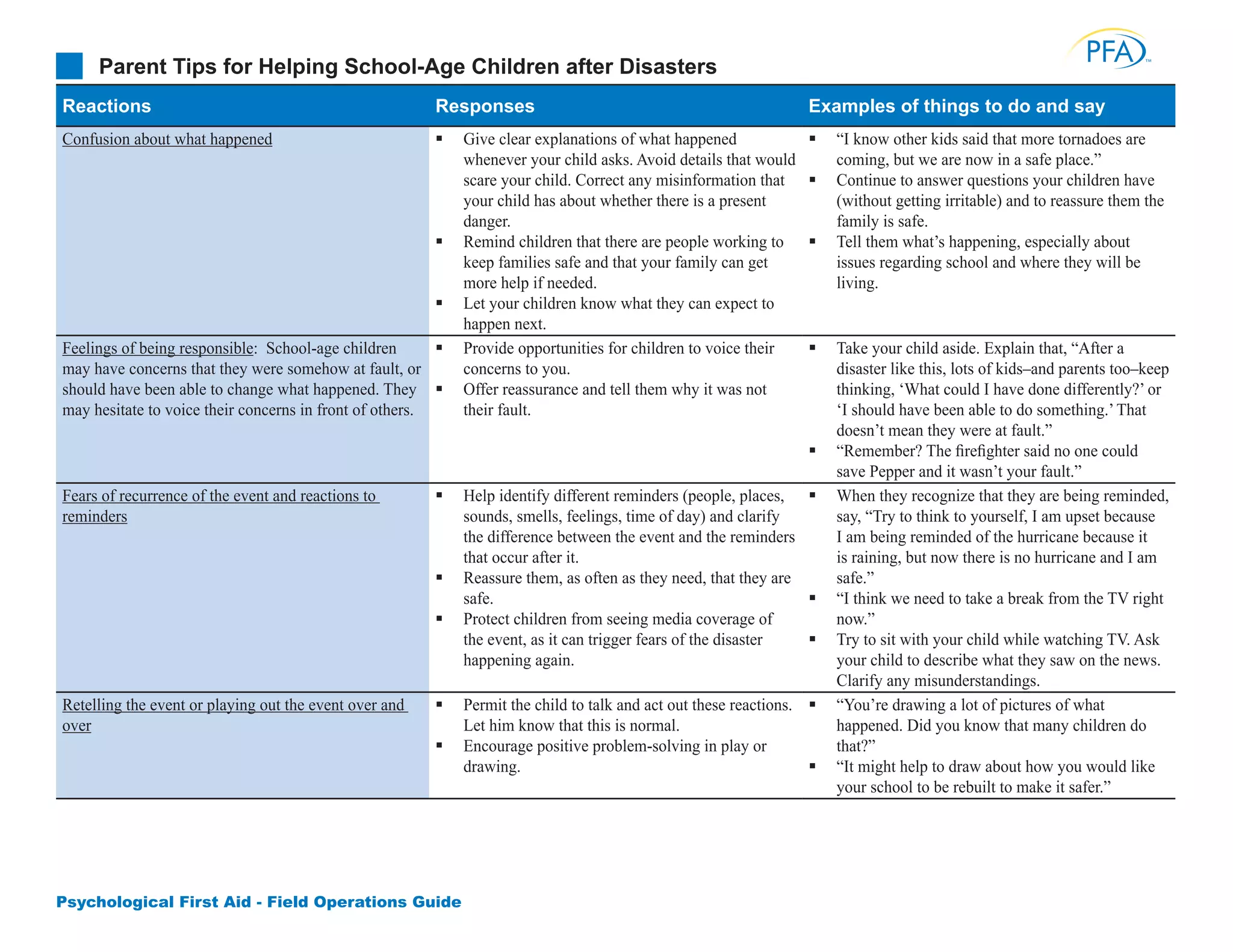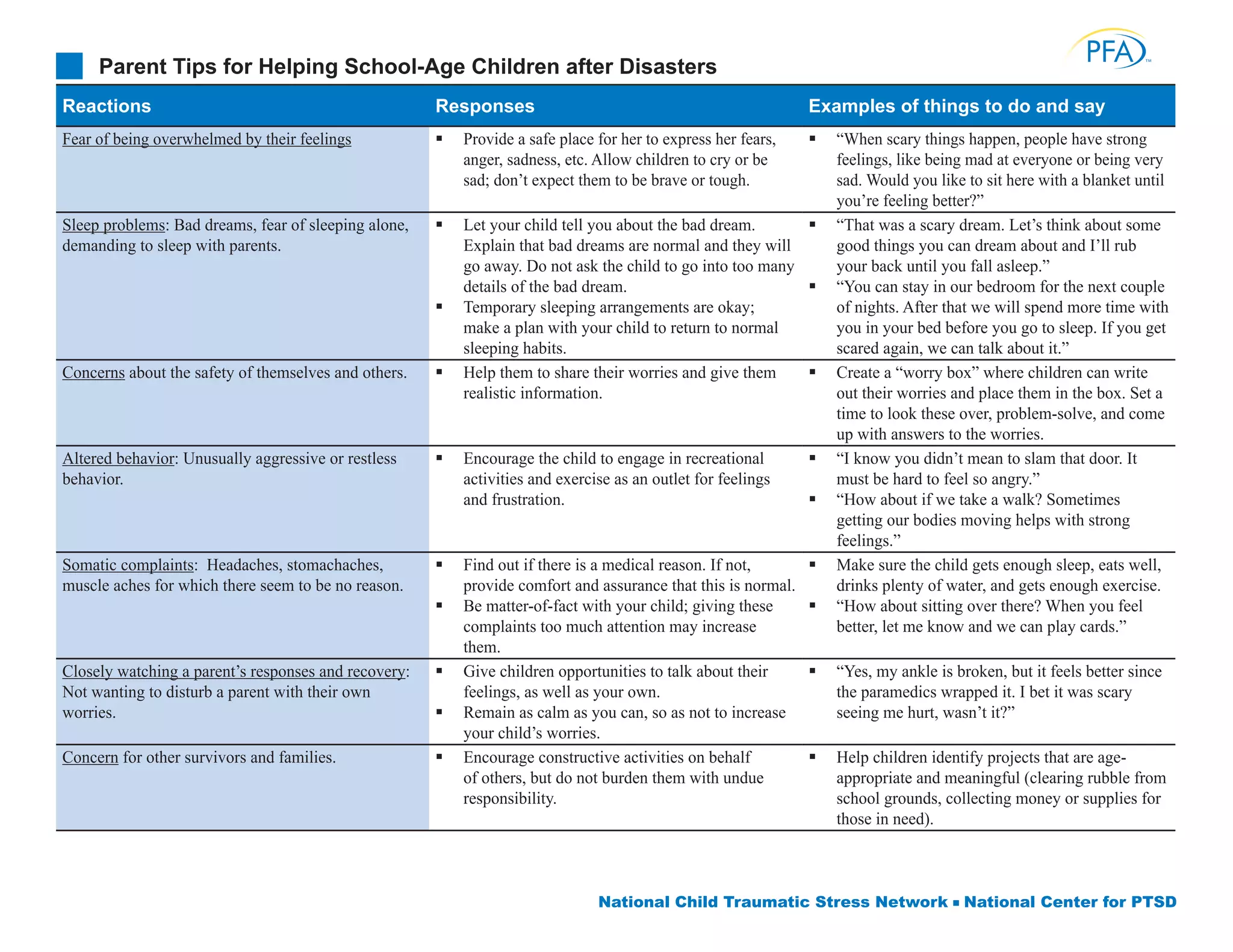The document provides guidance for parents on helping school-age children cope after disasters. It outlines common reactions such as confusion, feelings of responsibility, fears of recurrence, retelling the event, and sleep problems. It recommends that parents provide clear explanations, reassurance, encouragement of positive coping activities, and temporary changes to sleep arrangements to help children through this difficult time.

